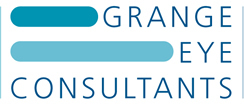How do you treat computer vision syndrome?
The treatment of computer vision syndrome is first and foremost education so that the patient understands what computer vision syndrome is and it’s all related to a low blink rate which causes a dry eye which causes a sector inflammation or rawness of the eye.
Why education is so important to combat computer vision syndrome.
Firstly educate patients to try and take breaks so that they blink. If that’s not effective then patients who have this syndrome may consider looking at the office environment in which they work in, they may work in a very dry air-conditioned office in which case it may be appropriate to look at the humidity of the area that we work in because of course, the drier the environment the more the tears will evaporate.
Study your environment and understand what could be making computer vision syndrome worse.
So I think that’s the second step to look at the humidity of the environment they work in. It may be as simple as if somebody works next to a radiator that they move away from the radiator because it’s hotter by the radiator; that will cause more evaporation.
Go to your ophthalmologist to discuss further options.
If that’s not successful patients may then consider using artificial teardrops which they use throughout the day to make their eyes more comfortable. Contact lens wearers may look at the type of contact lens, they may want to see their optometrist to look at the type of contact lens that they wear to get a higher water content contact lens because that may be helpful.
Because we commonly see people who come to us because they’ve become contact lens intolerant and what we talk to them about what they mean the fact that they can’t wear their contact lenses effectively anymore, is very frequently because of they have computer vision syndrome.
And in fact, it’s quite a common reason for people seeking corneal laser refractive surgery because they have become contact lens intolerant and even with the steps I’ve just described they can no longer wear their contact lenses. They can maybe wear them for six hours, eight hours instead of all day long.
And if you’re a young person it may be that you want to seek a surgical solution for that because these patients don’t have fundamentally dry eyes, it’s just that the computer vision syndrome and the wear of the contact lens on the surface of the eye exacerbate things. Because we need more tears to wear a contact lens than we do not wear a contact lens.
Now some of these computer vision syndrome patients are fine if they’re not wearing contact lenses, if they’re wearing their glasses, but then they wear contact lenses they’re symptomatic, so logically if you then perform corneal laser refractive surgery on them, once the eyes have healed that should improve their computer vision syndrome. So there’s a spectrum of very simple, to even surgical solutions, for patients with computer vision syndrome.
About the Author

Mr Robert Morris
BSc(Hons), MB BS (Hons), MRCP, FRCS, FRCOphth
Consultant Ophthalmic Surgeon
Robert Morris trained at St Bartholomew’s Hospital part of the University of London. He graduated with Honours in his final examinations. Robert completed his post-graduate ophthalmic training at the renowned units in Oxford Eye Hospital and London’s Moorfields Eye Hospital. Within the NHS, he has had a high volume cataract surgery practice and performed over 12,000 cataract procedures. He has an interest in squint surgery and is a national expert in this field. In addition to his NHS work, Robert manages a successful independent private practice. He continualy updates his training to keep abreast with the latest technology and techniques in refractive surgery.
